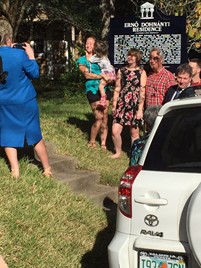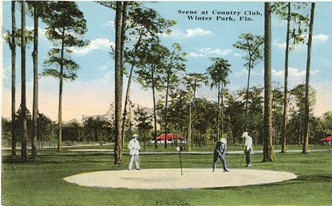Goal 1: Identify, Document, and Preserve Florida’s Historic Places
 Objective 1-A: Bolster Identification and Evaluation of Historical Resources
Objective 1-A: Bolster Identification and Evaluation of Historical Resources
- Conduct surveys at the municipal level to identify historic properties in Florida history.
- Reevaluate previously surveyed areas, and update records as necessary.
- Encourage the incorporation of modern technologies and techniques in historic resource survey, including oral histories.
- Expand the scope of historic resource survey beyond architecture to identify rural and urban landscapes, traditional cultural properties, and other under-represented resources.
- Objective 1-B: Enhance Recognition and Contributions of Under-Represented Groups in Florida History
- Produce multilingual publications on historic preservation.
- Produce multilingual historical markers.
- Develop historical contexts that address under-represented groups in Florida.
- Identify and designate Traditional Cultural Properties in Florida, and list them on the National Register of Historic Places.
- Increase identification efforts for historic properties associated with African Americans, Native Americans, Latinos, Asian Americans, the LGBT community, religious minorities, and other under-represented groups.
 Objective 1-C: Encourage Cooperation and Collaboration to Enhance Historic Preservation
Objective 1-C: Encourage Cooperation and Collaboration to Enhance Historic Preservation
- Provide easy, online access to National Register nominations, surveys, site files, historic contexts, and other information through an online Geographic Information System portal.
- Utilize new technology and social media platforms to facilitate collection and distribution of preservation information.
- Conduct training and outreach on preservation concepts, techniques, strategies, and benefits.
- Incorporate traditional buildings skills into concepts of Florida Folkways.
- Distribute informational materials that address timely and specific preservation issues.
- Objective 1-D: Improve the Management of Archaeological Resources
- Survey aquatic preserves and other Florida submerged lands to identify and document sites.
- Establish archaeological preserves, in conjunction with appropriate historic designations, to protect significant archaeological sites.
- Strengthen public understanding of archaeology as a tool to interpret and preserve cultural heritage.
- Train land managers and law enforcement officials on the management and protection of archaeological sites on public lands.
- Provide greater assistance and public involvement of site management throughout Florida, through collaboration with volunteer groups, avocational organizations, and professional organizations.
- Increase public awareness of and access to archaeological resources through digitization of artifacts and sites, made available via interactive educational websites.
- Promote knowledge of submerged archaeological sites as cultural heritage and patrimony, rather than resources for personal or commercial gain.
 Objective 1-E: Address Long Term Threats to Historic Properties
Objective 1-E: Address Long Term Threats to Historic Properties
- Incorporate historic preservation into disaster response plans at the state, county, and local levels, including through the expansion of Certified Local Government Programs.
- Digitize and securely back up planning and preservation documents to improve resiliency and facilitate the timely distribution of information in a disaster scenario.
- Establish long term planning strategies for mitigating and adapting to sea level rise, and incorporate them into response plans and comprehensive plans at all planning levels.
- Survey sea level rise adaptation and mitigation efforts of other coastal states, and adopt relevant strategies.

